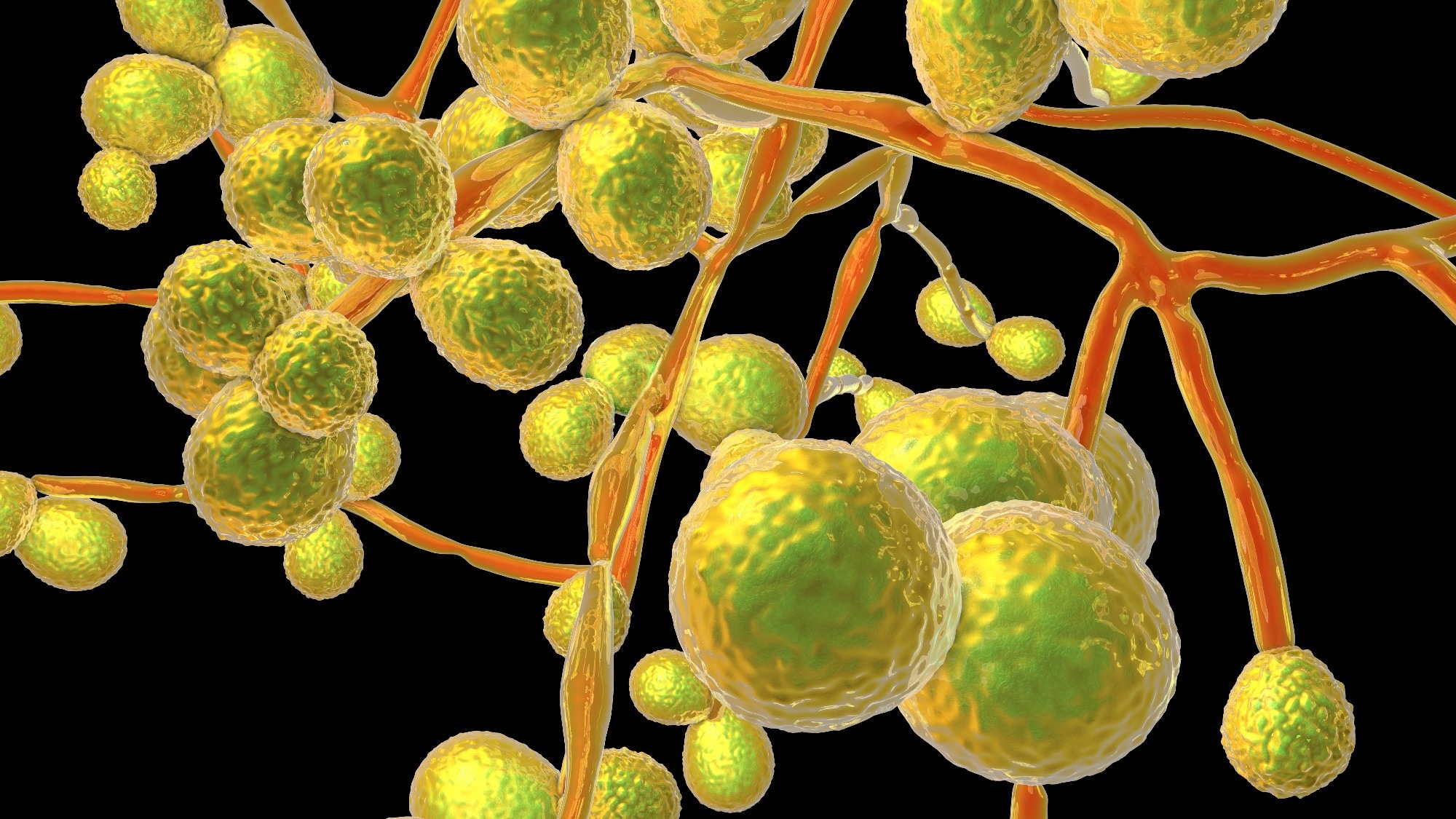
 *Important notice: bioRxiv publishes preliminary scientific reports that are not peer-reviewed and, therefore, should not be regarded as conclusive, guide clinical practice/health-related behavior, or treated as established information.
*Important notice: bioRxiv publishes preliminary scientific reports that are not peer-reviewed and, therefore, should not be regarded as conclusive, guide clinical practice/health-related behavior, or treated as established information.
A team of scientists from Australia and Israel demonstrates that Candida auris, a fungus associated with life-threatening and drug-resistant infections, escapes the host’s innate immune response by destroying macrophages through metabolic reprogramming. The fungus is also capable of escaping antimicrobial inflammatory response.
The study is currently available on the bioRxiv* preprint server.
Study: Candida auris evades innate immunity by using metabolic strategies to escape and kill macrophages while avoiding antimicrobial inflammation. Image Credit: Kateryna Kon / Shutterstock
Background
Candida auris is an emerging fungus responsible for blood infections with a high mortality rate. The infections are multidrug-resistant and pan-drug-resistant in nature.
Some studies have suggested that fungal cell walls might play a role in immune evasion by shielding the fungus from recognition by macrophages. However, some studies have contradicted these findings by showing that Candida auris cell wall induces more robust pro-inflammatory responses in hosts compared to other common fungal pathogens. Such lack of information on the mode of action of Candida auris makes it challenging to develop novel therapeutics with improved anti-fungal activity.
In the current study, scientists have investigated the mechanisms adopted by Candida auris to escape host immune responses and establish infection.
Important observations
The study findings revealed that Candida auris escapes immune recognition and containment by macrophages and causes macrophage destruction by inducing metabolic stress. By analyzing isolates of four different pathogenic clades of Candida auris, the scientists observed that macrophage escape and destruction by the fungus is a conserved mechanism.
Specifically, Candida auris was found to destroy macrophages by disrupting glycolytic metabolism. Simultaneously, the fungus showed the ability to escape recognition and elimination by the NLRP3 inflammasome. The NLRP3 inflammasome is a vital component of the innate immune system that mediates the activation of an inflammatory protease (caspase-1) and induces the secretion of pro-inflammatory cytokines in response to microbial infection.
Using Candida auris-infected mice, the scientists observed that the deletion of transcriptional activator TYE7 leads to the inhibition of its glycolytic metabolism, reduction of its ability to destroy macrophages, and inhibition of its ability to establish infection in the kidneys. These observations indicate that TYE7 serves as a vital transcriptional regulator of Candida auris metabolism and pathogenesis.
Using a live-cell imaging platform, the scientists showed that Candida auris starts escaping macrophage-mediated recognition after 8-10 hours of challenge. Moreover, they found that Candida auris initiates macrophage destruction after 16-18 hours of challenge.
Further mechanistic analysis revealed that Candida auris does not induce macrophage lysis. Instead, it was observed that the glycolytic metabolic capacity of the fungus supports its proliferation in macrophages, leading to a progressive increase in fungal loads to a certain threshold to trigger the non-lytic destruction of macrophages.
Such non-lytic escape from macrophages might explain the absence of NLRP3 inflammasome activation in response to Candida auris infection. The findings revealed that because of the non-lytic mechanism, the phagosomal membrane remains intact during escape. Therefore, the rupture of the phagosomal membrane by invasive hyphal growth of the fungus is required to activate the NLRP3 inflammasome.
Based on these observations, the scientists suggest that the metabolic adaptations allow Candida auris to grow inside macrophages and induce non-lytic escape, which collectively contribute to its escape from antimicrobial inflammatory responses.
The scientists observed immunometabolic reprogramming of macrophages, leading to increased glycolytic metabolism. For macrophages, it is a conserved mechanism in response to pathogens. However, they did not observe any induction in glycolysis in peripheral blood mononuclear cells.
As mentioned by the scientists, “both human and mouse macrophages undergo immunometabolic reprogramming in response to Candida auris, which renders them susceptible to glucose competition by Candida auris that causes immune cell death.”
Study significance
The study demonstrates that Candida auris undergoes metabolic reprogramming to escape recognition by macrophages. This puts macrophages under metabolic stress, leading to macrophage cell death. However, despite macrophage destruction, no activation of the NLRP3 inflammasome has been observed, which might be due to the non-lytic escape of Candida auris from macrophages that do not rupture the phagosomal membrane.
Given the study findings, the scientists suggest that metabolic manipulation could serve as an effective intervention to initiate phagocyte-mediated destruction of Candida auris and control infection.

 *Important notice: bioRxiv publishes preliminary scientific reports that are not peer-reviewed and, therefore, should not be regarded as conclusive, guide clinical practice/health-related behavior, or treated as established information.
*Important notice: bioRxiv publishes preliminary scientific reports that are not peer-reviewed and, therefore, should not be regarded as conclusive, guide clinical practice/health-related behavior, or treated as established information.
- Preliminary scientific report.
Candida auris evades innate immunity by using metabolic strategies to escape and kill macrophages while avoiding antimicrobial inflammation, Harshini Weerasinghe, Claudia Simm, Tirta Djajawi, Irma Tedja, Tricia L Lo, David Shasha, Naama Mizrahi, Françios AB Olivier, Mary Speir, Kate E. Lawlor, Ronen Ben-Ami, Ana Traven, bioRxiv 2023.02.28.529319; doi: https://doi.org/10.1101/2023.02.28.529319, https://www.biorxiv.org/content/10.1101/2023.02.28.529319v1
